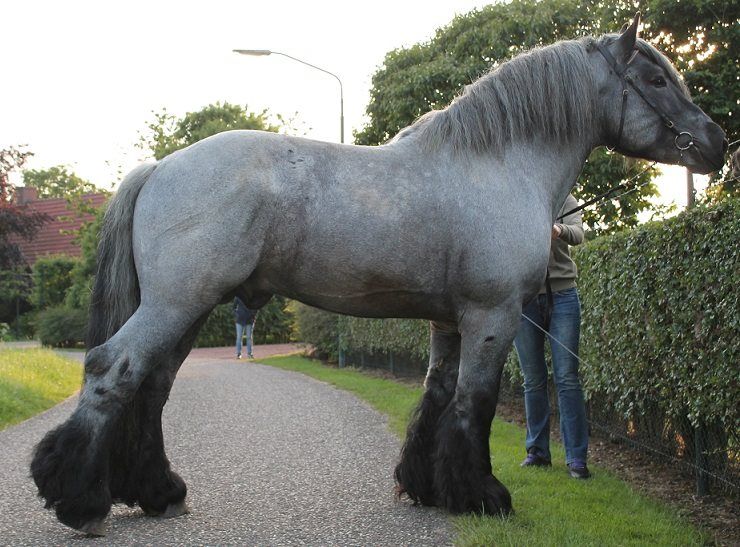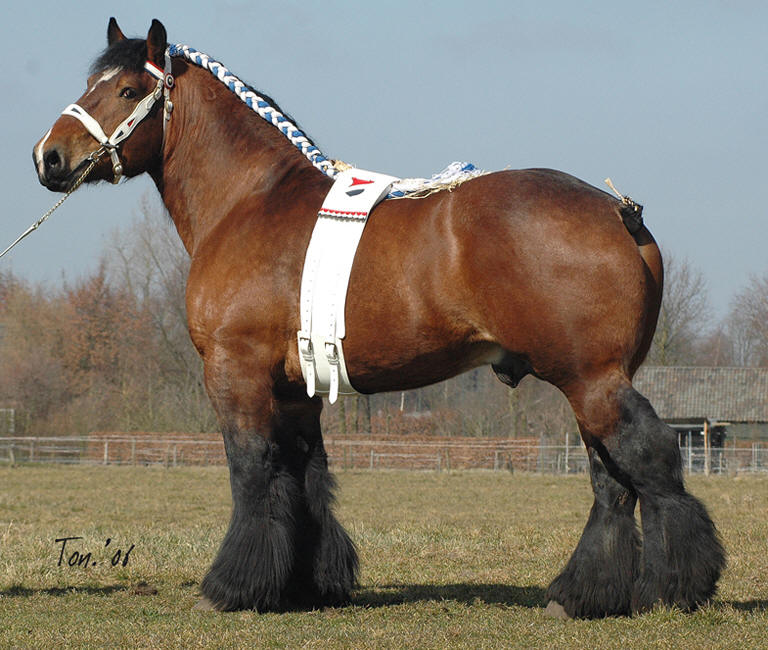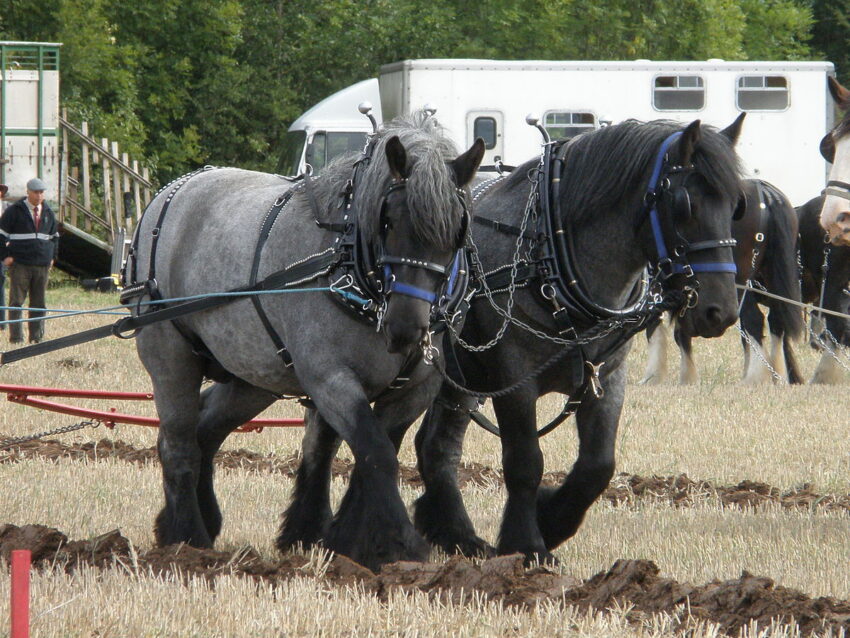Dutch Draft horses were first discovered in the Netherlands. They were developed from Belgian, Zeeland, and Ardennes horses to be big, strong workhorses that could assist in the farmlands. This cold-blooded horse is also recognized as the Zeeland Horse, and it was formed after WW1, by cultivating the heavy draft mares of Zeeland with Ardennes and Brabant stallions from Belgium. Before the industrialization of farm machinery, this horse was the most influential Dutch horse because of its great mass and power, but after agriculture stopped depending on horses, the breed descended quickly. The Dutch Draft is about 16 hands and is very powerful, with free movements and great endurance.



They are also known for their gentle, loving temperaments. The Dutch draft is most often bay or gray, though infrequently black individuals are found. The Dutch Draft breed is very rare, and its numbers began to decline after the need for the horses declined. The Royal Society for the Preservation of Dutch Draft Horse was established in 1914 to help protect the breed. Nowadays this is the largest of all the Dutch breeds and although their number has declined, there are still several dutch draft horse enthusiasts all over Europe that still breed them. Just like all the other draft breeds, the Dutch Drafts are also very disciplined and obedient. Below we have decided to show you everything you need to know about the Dutch Draft horse. Keep reading!



1-This Draft horse has one of the shortest and most dull histories of all the heavy horse breeds. There are only a few reports for this breed that demonstrate that the Dutch Draft was first developed in the early 1920s. It reached its height of popularity during the Second World War and in the first few years after, mainly in use on farms. The idea of draft breeding in Holland is to create a big, massive -horse, powerful, and solidly built. A Dutch Draft horse should have a head with a straight profile, short, lively ears, a powerfully muscled front, normal withers, a massively muscled loin and hindquarters, with good muscle in the legs and good feet. The movements should be big and easy. The Dutch Draft must be able to do hard work for long periods of time. Coat color is normally chestnut, bay or gray, and sometimes black.



2-The Dutch Drat horse looks alike the Belgian Heavy Draft and that’s because the Dutch Draft was bred from the Zeeland horse with crossbreeds to the Belgian and Belgian Ardennes horse. This breed was very popular in the regions of Zeeland and North Brabant, where it did great work on large arable farms in the heavy marine. It was also reproduced in very large numbers on large farms in the marine clay areas of the province of Groningen, although it did not succeed in becoming more successful than the Groningen horse, whose traits were more in harmony with the nature of the farming community. In the province of South Holland, and especially on the island, on large farms where practices were affected by those of Zeeland and western North Brabant, the Dutch Draft horse was also used to do heavy work.



3-The most precious quality of the Dutch draft horse is its unusually quiet nature and the patience of its movements. Although it is recognized as a quiet horse, they can very lively when it is required. This makes it an excellent animal for several small farmers on mixed farms in sandy regions and that is why the Dutch Draft is usually located in Gelderland and to some extent in North Brabant and Limburg. As well as being immensely powerful and strong they also had a gentle and kind nature which made them very simple to control. Their strength was such that they would work quite gracefully all day in the field without showing any effort.



4-This is the heaviest of all Dutch breeds and is especially adaptable for extended and heavy haulage or traction. The development of mechanization and motorization has reduced the demand for heavy horses, but a number of large, healthy breeding animals like the Dutch Draft horse.



5-There are only a few Dutch Drafts left nowadays, and according to the latest study, there were only about 1424 Dutch Draft horses all over the world. The Dutch Draft is usually owned by people as pets. There is no Stud Registry and its numbers are decreasing quickly. They are often seen in competitions at farm events and can also be used mainly as a pleasure or farm workhorse because they are not suitable for any kind of sport.



